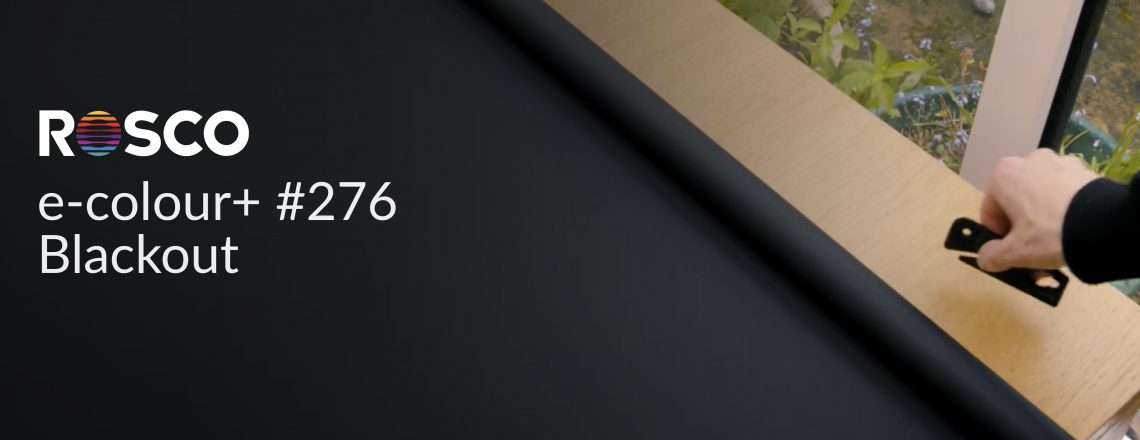Filmmakers and photographers are always looking for new and exciting light modifiers to use in their lighting setups. That’s why we asked Photographer, Cinematographer, and Rosco Ambassador Richard William Preisner to help us introduce our newest lighting modifier - Rosco E276 Blackout.
E276 Blackout is a part of Rosco’s e-colour+ range of lighting filters. As Will mentions in the video, e-colour+ uses the same three-digit name & number system that Lee and other gel companies have used over the years. The material itself is a 3 mil (76 micron) thick opaque polyester film that features a matte/frosted black finish and is available in 60”x20’ (152.4 cm x 6.1 m) rolls.
Blocking Out Windowlight
When shooting on location, sometimes the natural daylight
coming through the windows can be a real blessing. Many times, however, that
light source needs to be removed from the shot altogether. In the video, Will
demonstrates how filmmakers and photographers can easily install Blackout temporarily
into a window using the technique found in our Guide To Installing Filters In Windows.
Creating Negative Fill
Rosco E276 Blackout can be used to remove ambient or bounced light that is entering the scene. This film lighting technique is called negative fill and it’s great for creating more contrast in a shot. Because Blackout has a frosted matte finish, it absorbs light wonderfully, which makes it a fantastic solution for creating negative fill. Simply skin the Blackout onto a 2x3, 4x4, or even a 5x5 gel frame and set it up wherever you’d normally use a flag. Will also points out that you can even waterfall the Blackout right off the roll using a grip arm and a C-Stand.
Duvetyne and polystyrene panels are common filmmaking materials for creating negative fill. Because Blackout is waterproof, however, it can be used in wet conditions where duvetyne would get heavy and soggy. Blackout can also easily be taped temporarily onto walls or floors to remove ambient bounce. In addition, Will also points out that, because Blackout comes in convenient rolls, it transports easier than large sheets of poly.
NOTE: Rosco Blackout is not intended for use directly on hot lights. Rosco Blackwrap/Cinefoil/Photofoil is the recommended product for that sort of application.
Custom Cucoloris Effects
Using shadows is a very useful technique to create textures and patterns in light. Filmmakers can use a cucoloris (aka cookie) to cast shadows into their scenes. Throughout the years, cookies have been made out of plywood, tree branches, and old window mullions – to name a few. Now, many of those designs can simply be made by cutting patterns out of E276 Blackout using a matte knife or scissors.
Between blacking out windows, creating negative fill, and adding shadows into the shot – Blackout is a versatile material to have on a gel cart. If you’re looking for a new light modifier to control the light in your next project, contact your favorite Rosco dealer and order a roll of e-colour+ #276 Blackout today.
Thank you to Rosco Ambassador Richard William Preisner for helping us introduce this exciting new lighting modifier. If you'd like to learn more about Will's work as a Cinematographer and Photographer, you can visit his website - www.rwpreisner.com - or follow him on Instagram: @rwpreisner. You can also check out Will's Vision & Graft Podcast. This mental wellbeing companion features discussions with other creatives about hurdles they face and how to overcome them.


